It’s January 2024, and I’m thinking about what new (to me) plants I am going to play around with this growing season. Among other natives, I’m curious about Turtleheads. These native plants remind me of a cross between snapdragons, digitalis (foxglove), and impatiens because of their great foliage. A pretty amazing combination.
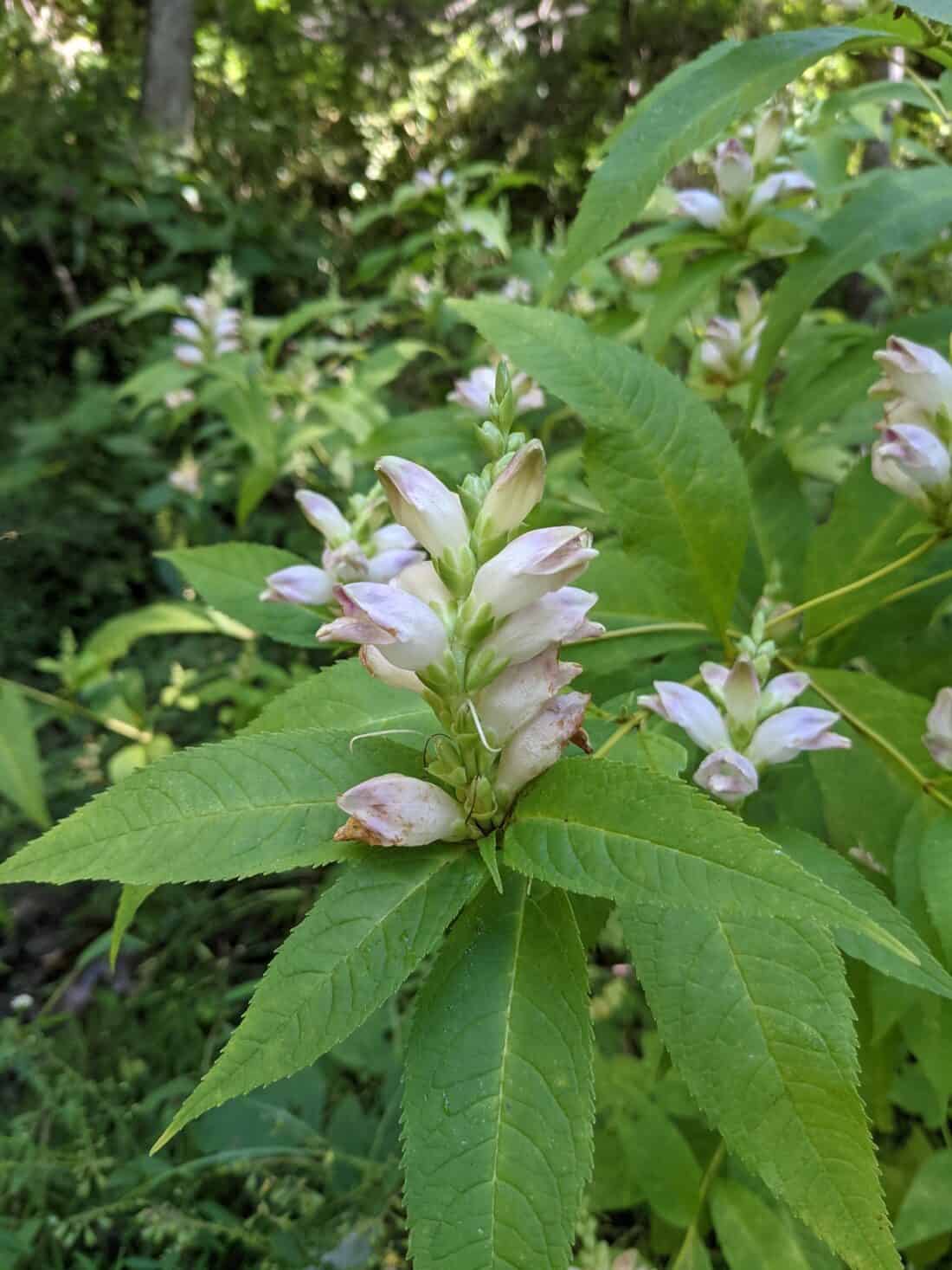
I’ve been researching – primarily through Go Botany – Native Plant Trust’s guide to New England Native plants. Turtleheads come in a variety of cultivars – and all are native to North America – but Chelone Glabra – the white-blooming Turtlehead, is the only true New England Native.
The red and pink varieties (Chelone obliqua and Lyonii, respectively) – while Native to the USA, seem to all be native to other ecoregions (both along the southeastern seaboard of the USA).
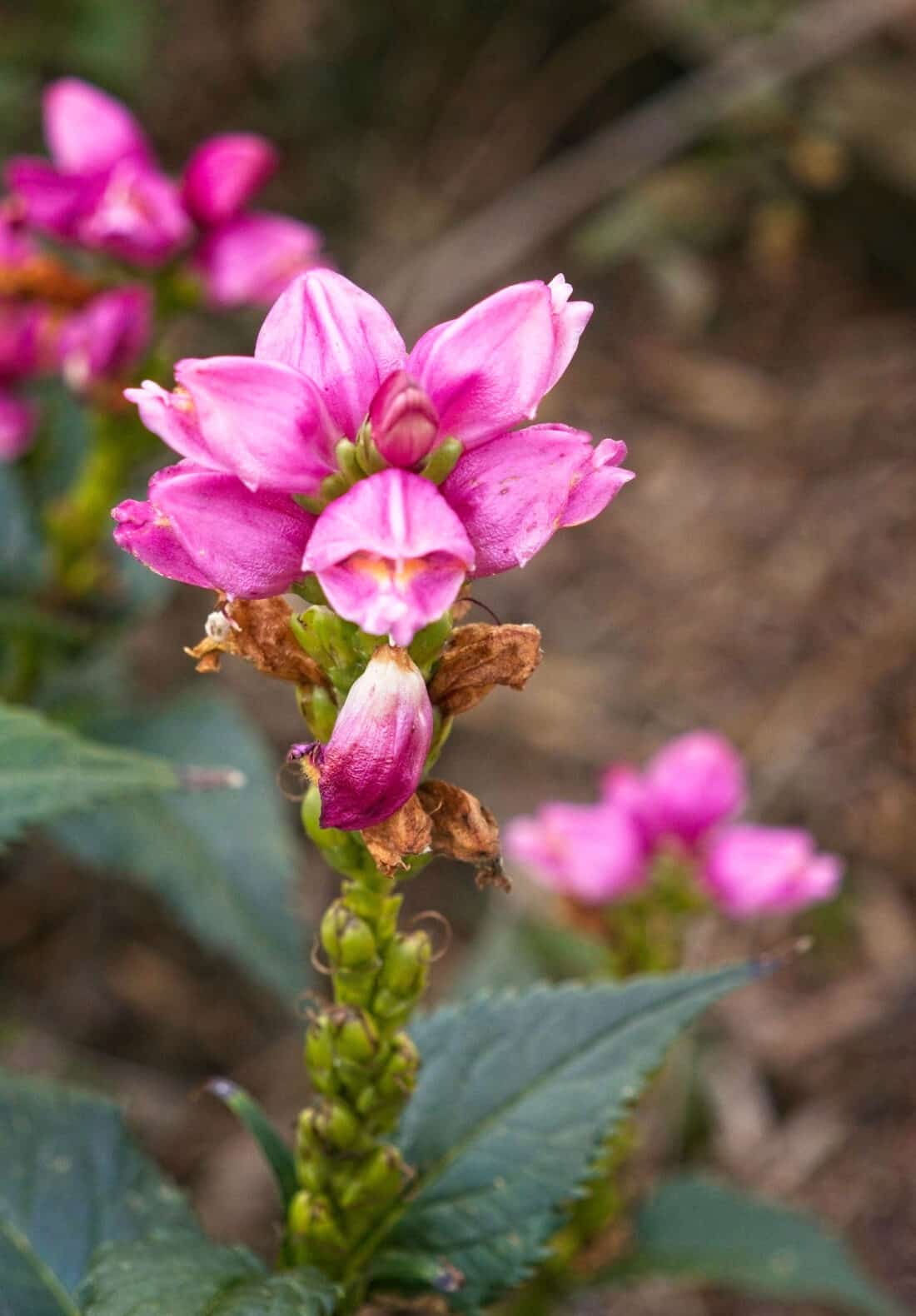
Turtleheads are a great Native foliage plant for Moist Shade
The upright, bushy mound of green foliage is almost as much a reason to grow these wildflowers as the large, bright-pink hooded blooms.
Chelone blossom in the late summer and are best in a moist or wet site receiving something less than full sun (though they are often reported to be tolerant of a wide range of considerations).
They are native to a large swath of states from Michigan and Wisconsin down the central part of the country and through the Appalachians to the mid-Atlantic states and North and South from Maine to Florida.
Grow them in large swathes at the edge of a pond or in a bog garden. Cut them for flower arranging. Plant them to attract butterflies and hummingbirds.
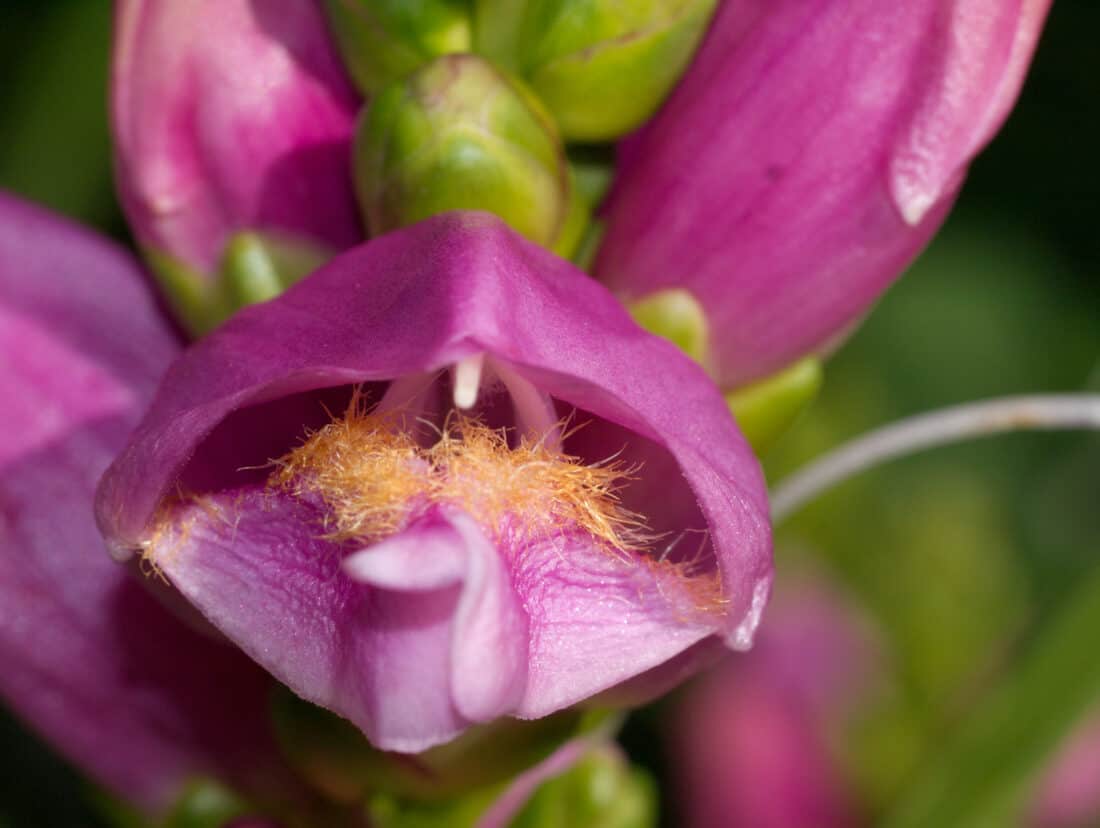
Great Planting Combinations with Chelone Turtlehead Plants
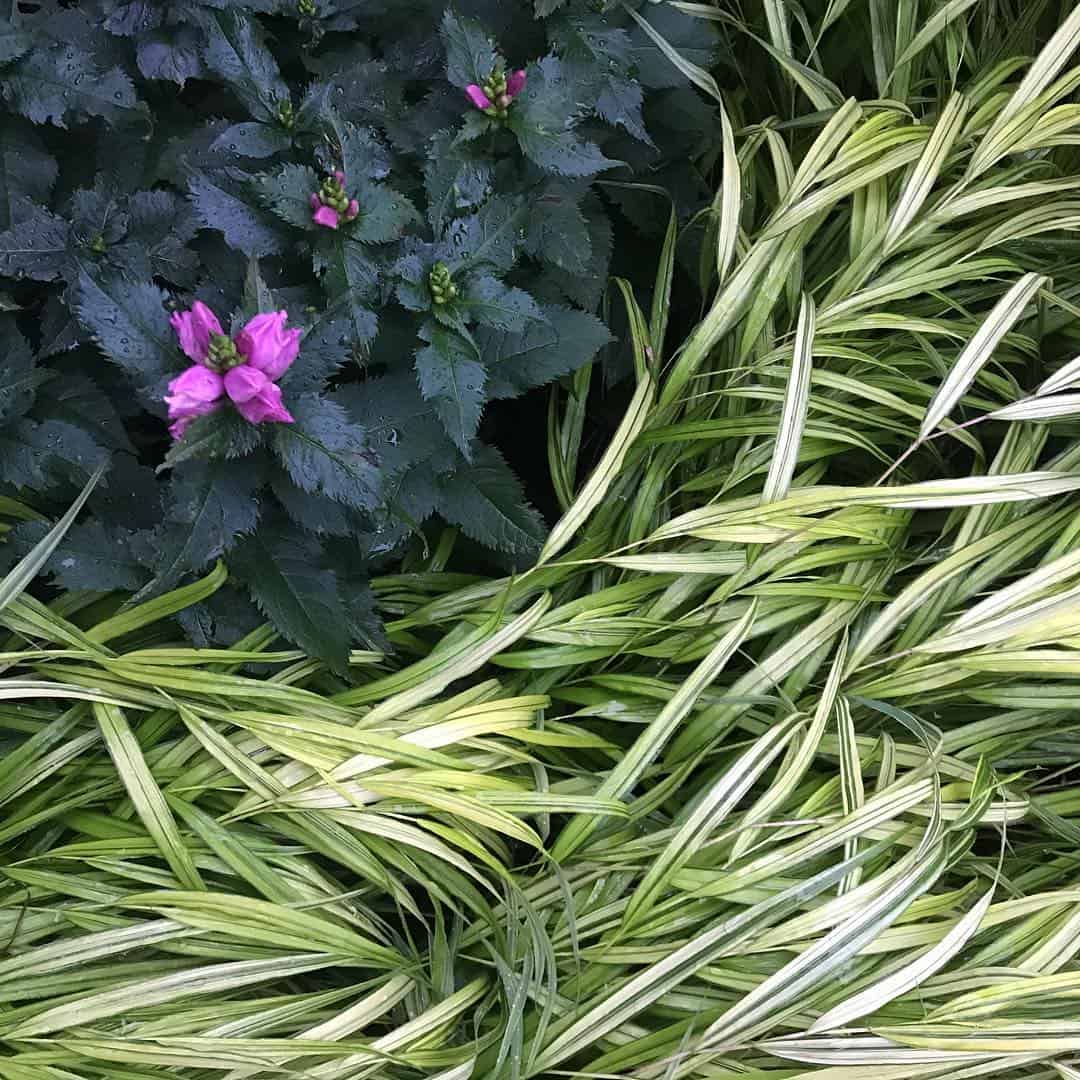
Chelone lyonii ‘Hot lips’ is perhaps the most interesting for garden designers. Its dark foliage and bright pink flowers are more eye-catching than some of the other cultivars.
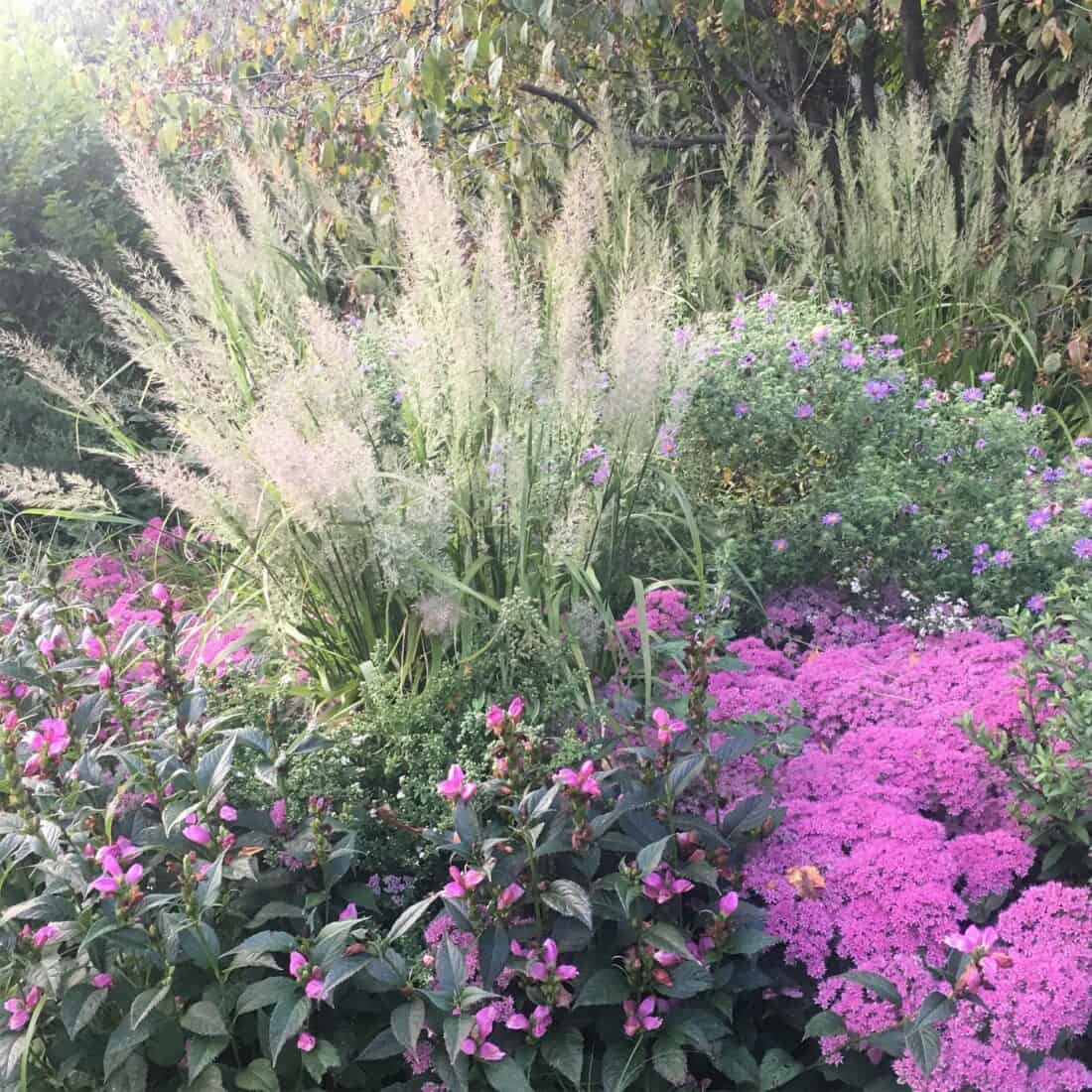
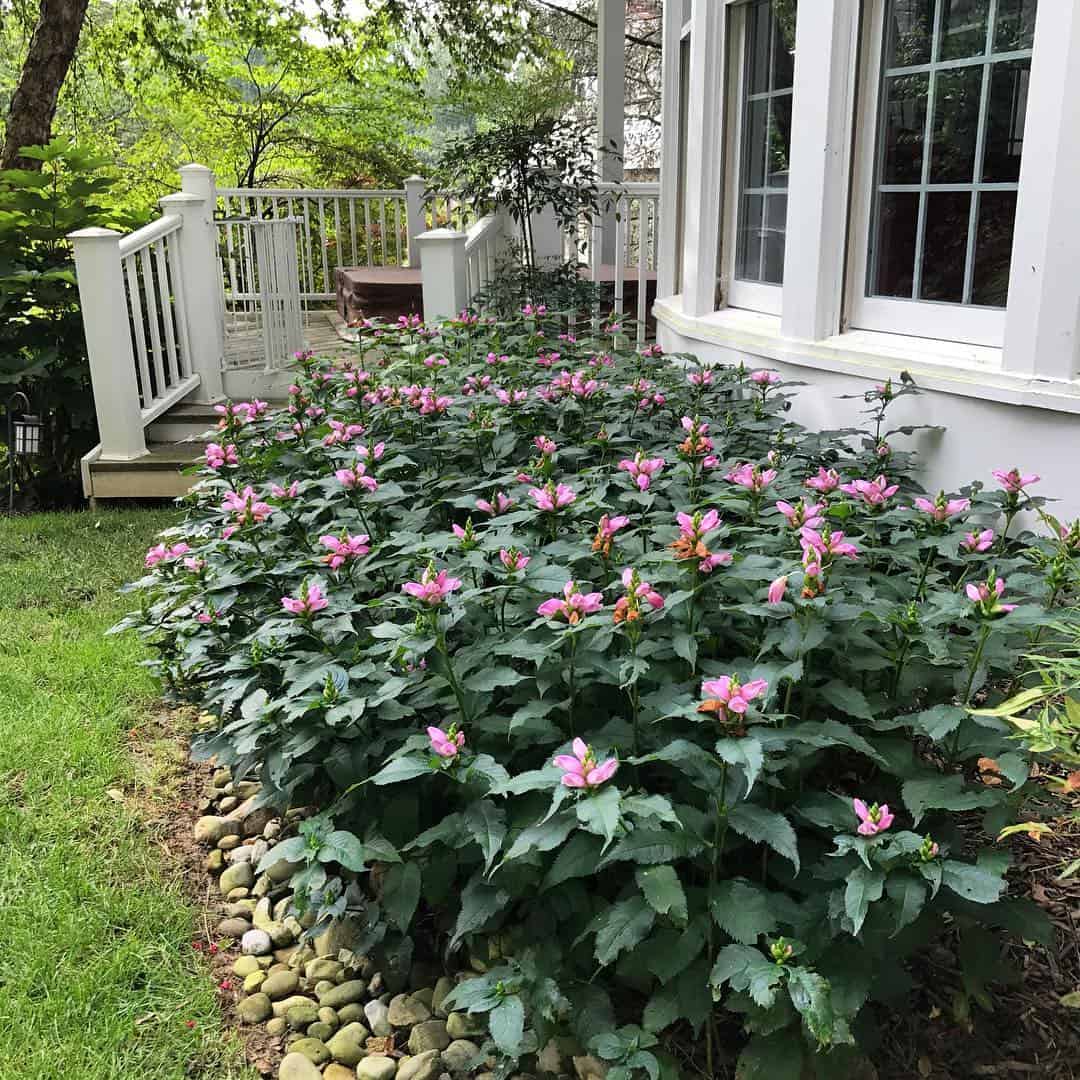
I love the simplicity of this foundation planting – the mass of chelone is so healthy and satisfying.
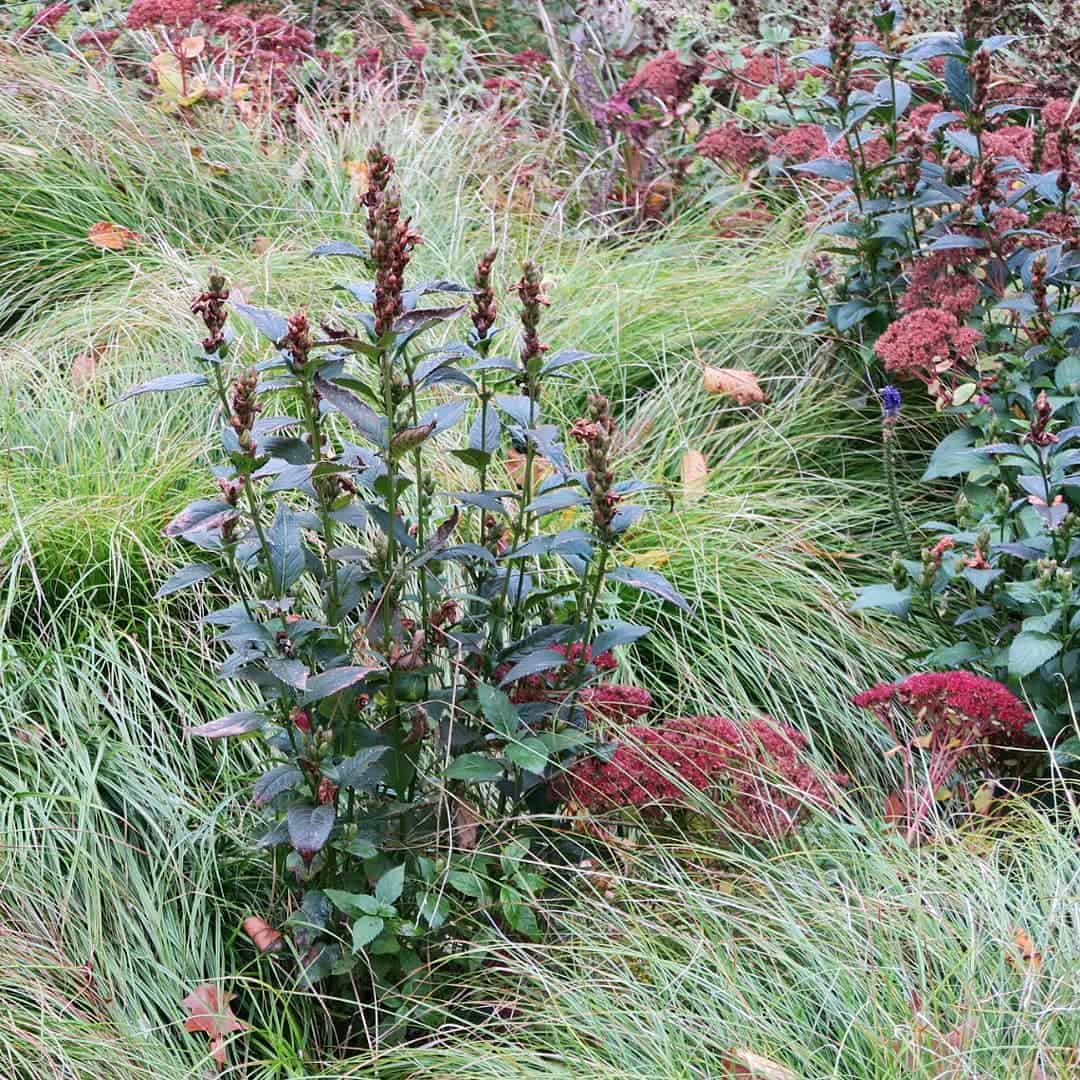
More about Chelone Plants
Name Origin: The name “Chelone” (pronounced kuh-LO-nee) comes from Greek mythology. Chelone is named after a nymph who was turned into a turtle as punishment by the gods. The name reflects the plant’s unique turtle-like flower shape.
Flower Shape: Chelone flowers are distinctively shaped like turtle heads. (Hence the common name.) The blooms typically have a two-lipped shape and are tightly packed along the flower spikes.
Pollination: The shape of the flowers isn’t just for show; it’s a clever adaptation to encourage pollination by bees. Larger bees typically pollinate Chelone. The bigger bees are strong enough to pry open the blooms and access the nectar and pollen.
Native Habitat: Chelone plants are native to North America. They are commonly found in moist woodlands, along streams, and in other wet, shady areas.
Medicinal Uses: Historically, Chelone has been used in Native American herbal medicine. It was used for various treatments, including as an anthelmintic for expelling worms.
Foliage: The leaves of Chelone plants are dark green, glossy, and broadly lance-shaped. They can add texture and lushness to garden spaces even when the plant is not in bloom.
Hummingbird Attraction: While bees are common pollinators, the tubular flowers of Chelone also attract hummingbirds, making them an excellent choice for a wildlife-friendly garden.
Varieties: There are several species and varieties of Chelone, including Chelone lyonii (pink turtlehead) and Chelone glabra (white turtlehead), each offering different bloom colors and plant characteristics.
Late Bloomer: Chelone plants are late summer to early fall bloomers, providing a welcome splash of color when many other perennials start to fade.
Easy Care: Turtlehead is known for being hardy and relatively easy to care for, preferring moist, rich soils but can tolerate periods of drought once established. It’s a great plant for gardeners looking to add reliable and unique blooms to their late-season garden.
+comments+